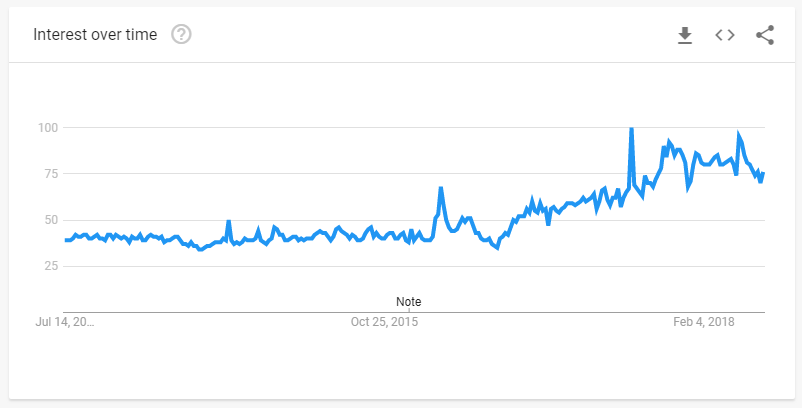History of Artificial Intelligence in Healthcare
Big Data as a Base for Artificial Intelligence in Healthcare
Thank you for reaching out to Sigma Software!
Please fill the form below. Our team will contact you shortly.
Sigma Software has offices in multiple locations in Europe, Northern America, Asia, and Latin America.

USA

Sweden

Germany

Canada

Israel

Singapore

UAE

Australia

Austria

Ukraine

Poland

Argentina

Brazil

Bulgaria

Colombia

Czech Republic

Hungary

Mexico

Portugal

Romania

Uzbekistan
Visiting a doctor typically involves spending hours in a waiting room, explaining intimate details of their weakness, getting an intricate diagnosis, or worse not getting one at all. A way to avoid these inconveniences looming large on the horizon is well depicted in science fiction literature and movies – medical artificial intelligence systems.
History of Artificial Intelligence in Healthcare
Big Data as a Base for Artificial Intelligence in Healthcare
First attempts to put AI to service in healthcare date back to 1970s. Many aspiring projects were launched then: the Fifth Generation Computer project in Japan, T. Shortliffe’s MYCIN program for medical diagnosis and therapy, the Cyc project in the USA in the 1980s, and others.
Pamela McCorduck described this flourishing of AI in her book Machines Who Think originally published in 1979:
“…medical-diagnosis programs at Rutgers, Stanford, the University of Pittsburgh, and elsewhere, which specialize in internal medicine, bacterial infections, pulmonary-function diagnoses, and other medical specialties (Feigenbaum et al., 1971; Moses, 1971; Sussman and Stallman, 1975; Pople, 1977; Feigenbaum, 1977; Amarel et al., 1977). A program is even underway to provide intelligent advice to a molecular geneticist on the planning of experiments involving the manipulation of DNA.”
However, the hype over AI soon dried up and the late 1980s come down to us under the name of the “AI Winter.” The hype has left behind considerable groundwork and several success stories, such as collaboration between artificial intelligence and the molecular biology community. This collaboration resulted in biologists creating their own gene ontologies, curated knowledge bases, and actively consuming and developing AI-enriched software. Methods pioneered in AI are now found across the spectrum of molecular biology, from drug design to the design of novel organisms to the evolution of life.
Today AI rides high again and finds a growing number of practical applications every day. Venture capital investments in AI companies has reached historical peaks: over 550 startups using AI as a core part of their products raised $5B in funding in 2016.
Interest towards artificial intelligence based on Google web search has significantly grown over the last 5 years.

Electronic healthcare records have long paved the way for implementing artificial intelligence and machine learning solutions in clinics and hospitals. Huge volumes of medical data incorporated over our lifetime doctor’s appointments, such as previous diseases, lab results, taken medication, and other medical history details, present fresh ground for data mining. Many HER vendors already have big plans for adding AI into the workflow in forthcoming iterations of their electronic health records platforms.
The features and services that we are promised to see as soon as in 2019 include pop health, telemedicine, voice interactions and machine learning-based clinical decision support, detecting health patterns for preventative treatment, and virtual assistants.
When thinking about AI in healthcare, most of us will certainly imagine a futuristic personal robodoctor that causally informs about present or probable health issues detected without any cumbersome test and similarly easily eliminates them. Though many medical AI evangelists align with the strategy of shooting to the moon and work on ambitious diagnostic applications, there are AI companies working on improving routine clinical workflows.
Diagnostic imaging is a powerful tool in detecting tumors. However, human vision is not a perfect instrument and may need machine assistance to improve diagnostics accuracy. Visual pattern recognition software based on deep learning network may be a clue to improved cancer detection.
 Deep learning algorithms patients’ risks of various diseases, such as hypertension, diabetes, and heart failure, as well as a probability of occurrence of certain clinical events. The algorithms equipped with scanning the back of patient’s eye
Deep learning algorithms patients’ risks of various diseases, such as hypertension, diabetes, and heart failure, as well as a probability of occurrence of certain clinical events. The algorithms equipped with scanning the back of patient’s eye
Sport trackers, smart watches, and other wearables having multiple sensors are seen everywhere, and you may wonder why would it be called a moonshot solution. The reason they are mentioned here is that their potential benefit strikes high – from smart inhalers that alert on local conditions that are likely to trigger an asthma episode to highly-tailored workout recommendations based on personal fitness tracker data.
Routine administrative tasks devour a great portion of doctors and nurses time. Automation of administrative workflow can change this. Natural Language Processing tools transcribing healthcare professional’s notes, while they examine a patient or perform other tasks, saves time on making medical records, prescribing medications, and ordering procedures and tests.
Efficient medical care, besides medications and procedures, involves creating comfortable conditions for patients, where all their basic needs are satisfied. So, accurate predicting patient flow and corresponding materials and products consumption results in more efficient resources utilization and reduced workload for healthcare staff.
EHRs, data about medications, test results, treatment recommendations, all of these are valuable sources of data, and they need to be well-structured and managed to help physicians rather than create more problems. Improving medical data quality so that could be easily accessed, queried, and analyzed, would facilitate retrieving information from various sources for medical staff and create the information base for medical AI solutions.

Artificial intelligence in medicine has the power to provide more accurate and efficient healthcare for patients. However, there are some challenges to be addressed to unleash AI transformational power.
Despite recent attempts to digitalization, healthcare remains a very conservative industry. Many clinics use legacy data management systems. There are no unified data storage standards and policies, which means that medical data is scattered and unstructured.
Extensive digitalization brings data security risks to a new level. The volumes of sensitive data kept and handled in medical storages is unprecedented. EHR adoption by the US medical institutions exceeded 90%. So, the measures to protect this data should be equally unprecedented.
Technology moves ahead in leaps and bounds, regulations, unfortunately, lags behind. There is still a lot to be done to set up standards and rules for AI implementation in the healthcare industry.
Considering all the benefits and challenges associated with AI in healthcare, we can say that this technology is just starting out in the field of medicine. Of course, there will be hurdles on the way to AI integration into medical workflows. Transforming any system so big, conservative, and overregulated would require a lot of effort, but even the longest day has an end. AI is blooming in many sectors, including finance and banking, customer support, air transportation, logistics, procurement planning, and it will become an integral part of healthcare sooner or later. Embrace the benefits that AI technology has in stock for you.

Sergio has more than 20 years of practical experience in IT sales, market research, branding, marketing strategy development, and IT project management. Sergio assists large companies and startups to define and launch new services and products with a focus on software development and IT consulting. His zest for new ideas and achievements materializes into productive projects.
Linkedin profileHistory of Artificial Intelligence in Healthcare
Big Data as a Base for Artificial Intelligence in Healthcare


A Software Bill of Materials (SBOM) is becoming one of the most important documents in modern software development. Still, many organizations struggle to create...

As cloud sovereignty becomes a strategic priority across the EU, Sigma Software applies its deep expertise and extensive experience to contribute to the develop...

Data is everywhere, yet its payoff isn't always there. Many IT leaders struggle with scattered analytics, rising storage costs, and unclear returns.We face...
Would you like to view the site in German?
Switch to German